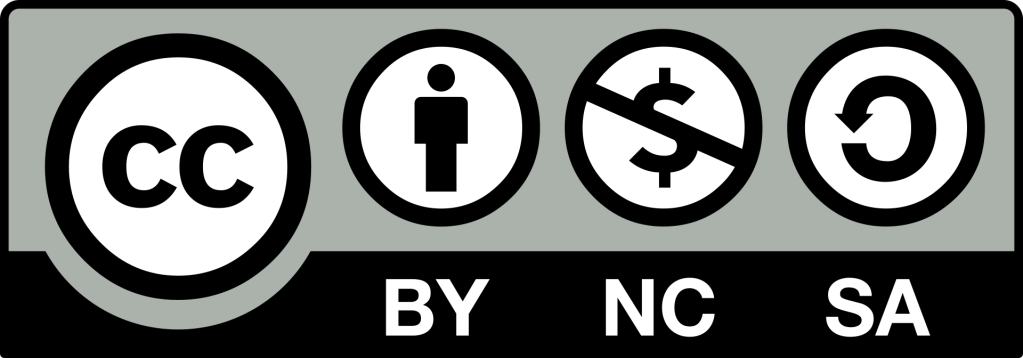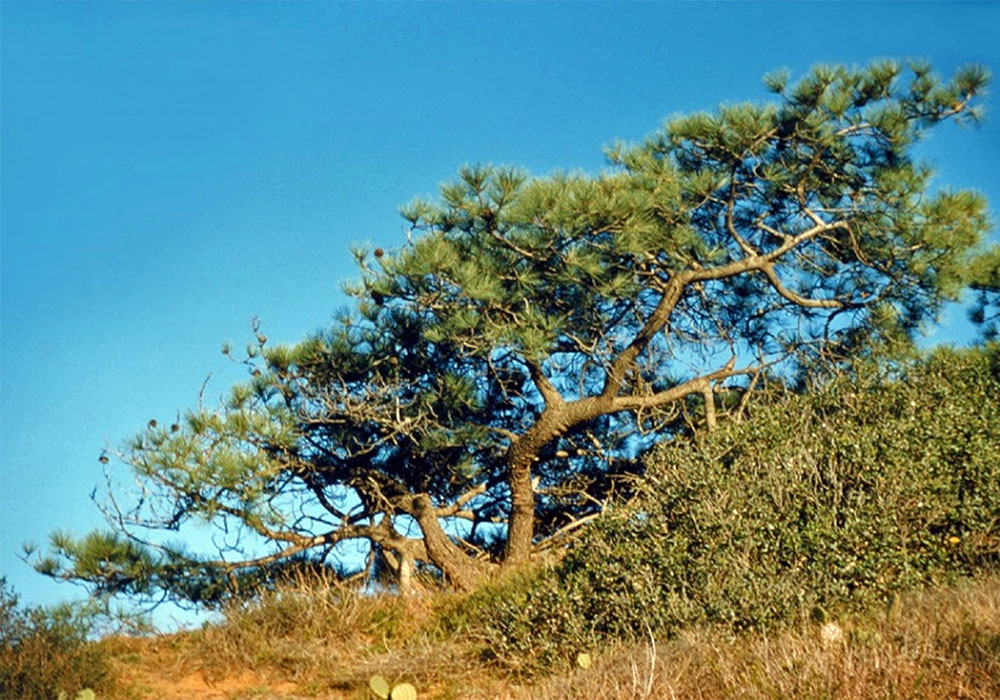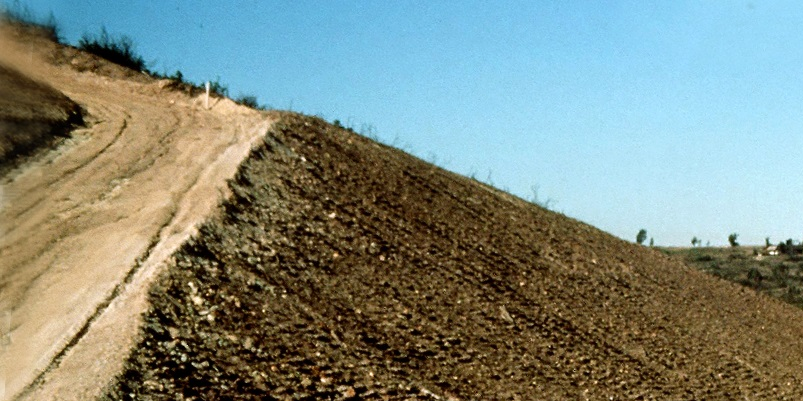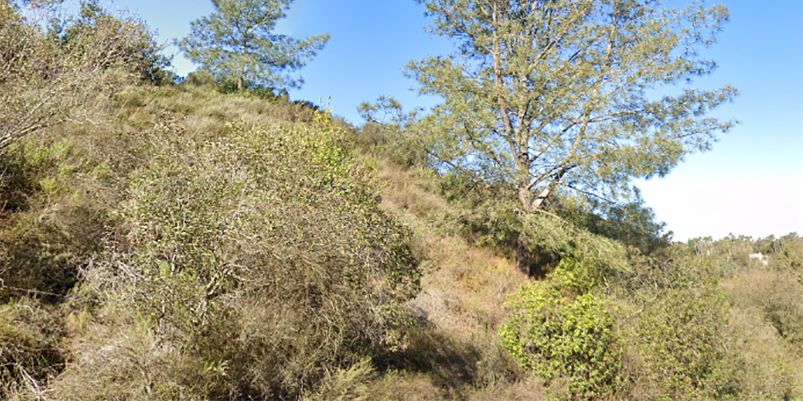
You are welcome to republish this story through the Creative Commons license CC BY-NC-SA 4.0. Where republishing conditions differ for images, this is noted in individual captions. (See this page for more information.)
By Wayne Tyson
Wayne is a long-time practitioner of ecosystem restoration and rewilding.
I’ll begin with a case of Torrey pine (Pinus torreyana) restoration by the City of San Diego that started over half a century ago. As a new park construction inspector for the city, I was assigned an already-designed project for native plant “revegetation,” which consisted of the “hydroseeding” of the cut slope and fills along a highway known as Torrey Pines Road (hydroseeding involves spraying the ground with a slurry of mulch and seed). This was a chance to help expand the area of the rare Torrey pine plant community.

In my role, I modified the seed mix and changed the planting pattern from the traditional street format of one tree every eighty feet along the roadside to naturalistic groupings farther back from the road edge. The pines were planted from fifteen-gallon containers in the late 1960s. An irrigation system had been installed following road construction.
The major plant species, in addition to Torrey pine, included hydroseeded orange bush monkey-flower (Diplacus aurantiacus), red bush monkeyflower (Diplacus aurantiacus var. puniceus), California sagebrush (Artemisia californica), California brittlebush (Encelia californica), California buckwheat (Eriogonum fasciculatum), and other natives—some indigenous to the area and some not.
The hydroseeding was a failure, which was probably due to a mixture of factors that included poor site conditions and an excessive number of seeds (plants came up too thickly, resulting in a higher demand for nutrients than the site could handle). In addition, maintenance personnel were instructed not to irrigate, but they did so anyway. And a large slope failure occurred soon after project completion.
Elsewhere, learning from our errors, we had more success.
For instance, some years later, along a nearby stretch of new road, another chance arose to help expand the Torrey pine plant community.
Torrey pines were planted as in the first project. There was no maintenance and no irrigation, except for watering of the trees, and that was soon abandoned. There was no plant replacement, except by natural reproduction. No external inputs were used except for a few seeds, the young trees, and their initial irrigation.
Full natural cover was achieved in about three years, but the test would be whether the restored land would flourish in the longer term. Happily, it has done just that. The slider below provides a comparison of the state of the project immediately after completion (left) and the situation in recent times (right).


Left photo by Wayne Tyson; right photo © Google (published under fair use)
The continuously changing and flourishing vegetation includes a mixture of vascular coastal chaparral species, such as laurel sumac (Malosma laurina), lemonade berry (Rhus integrifolia), spiny redberry (Rhamnus crocea), San Diego mountain mahogany (Cercocarpus minutiflorus), California sagebrush, red bush monkeyflower, and California buckwheat. Also thriving is the indigenous non-vascular plant community and the soil microbiome.
In these and other attempts at ecosystem restoration and rewilding, I spent at least fifteen years making mistakes before experiencing my first success, and I continue to make and correct errors, refining my own work. I truly believe, however, that no one will ever come up with a “best practice” in this area. Everyone probably has to find their own way—one that is preferably grounded in sound ecological theory. No single method can ensure success in all contexts. Impatience and the temptation to simply practice horticulture in the wild were at the root of most of my misjudgements.
Have I found some of the results to be unexpected, and even counter-intuitive? Absolutely. One thing I have learned for certain, though, is that hubris is the main threat to the successful practice of ecosystem restoration and rewilding. We need to be open to the need for refinement.
Another thing I have learned: The best we can hope to do is to modify contextual elements and enable the forces of nature to work their wonders.
Note
John Ewel wrote a short essay in the late 1980s about ecosystem restoration that struck me as being just about perfect. I challenge others to refine or replace it.

